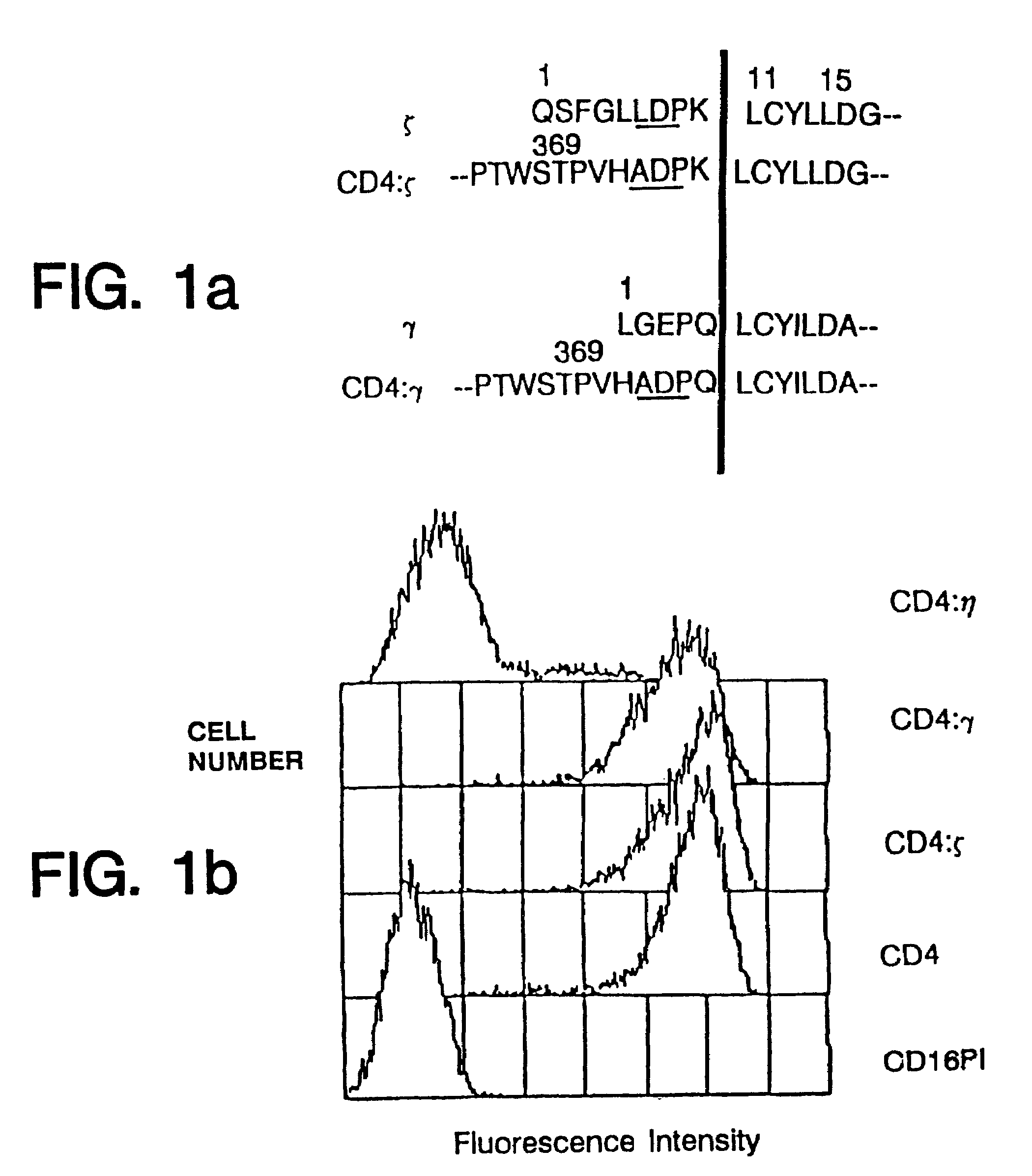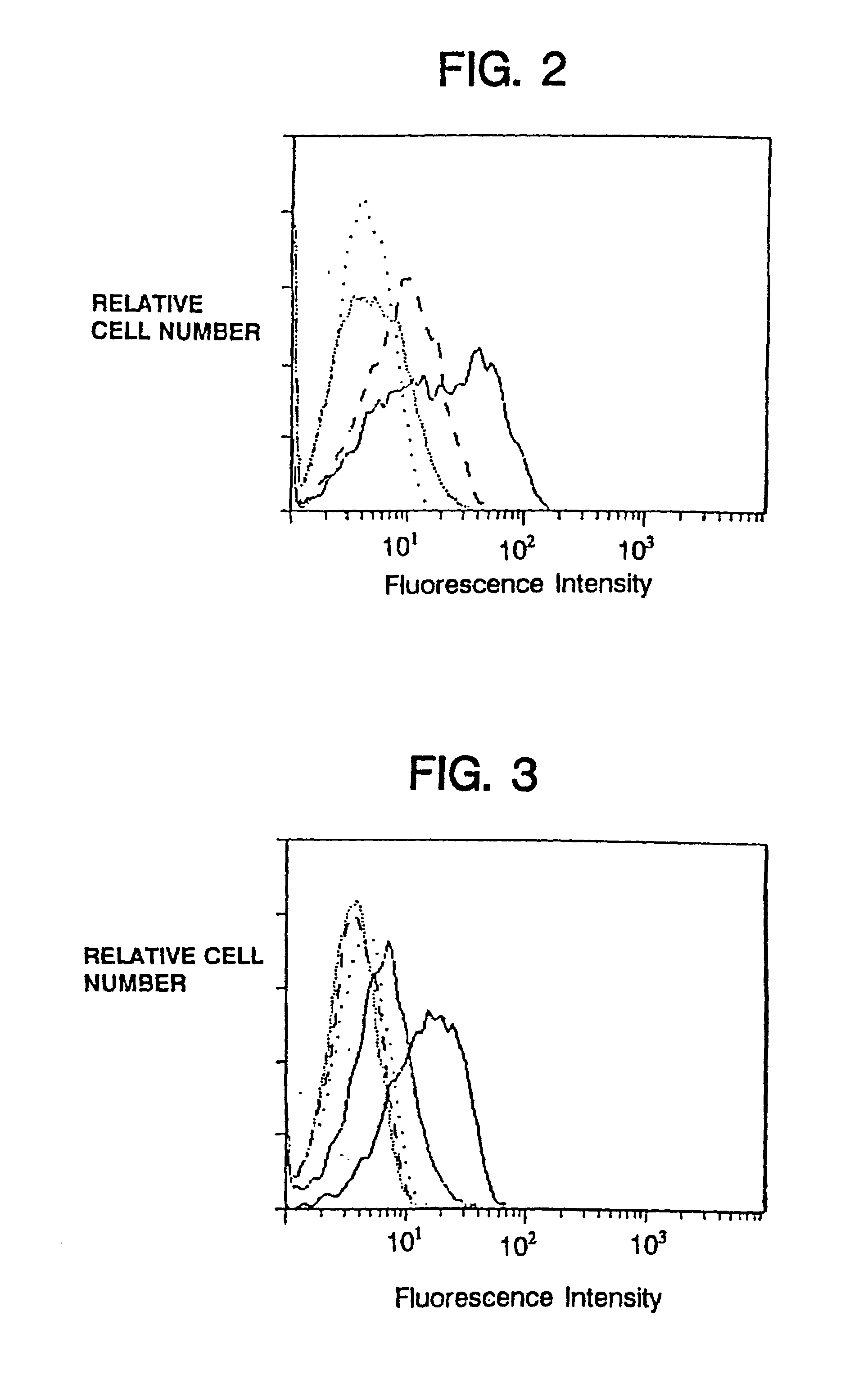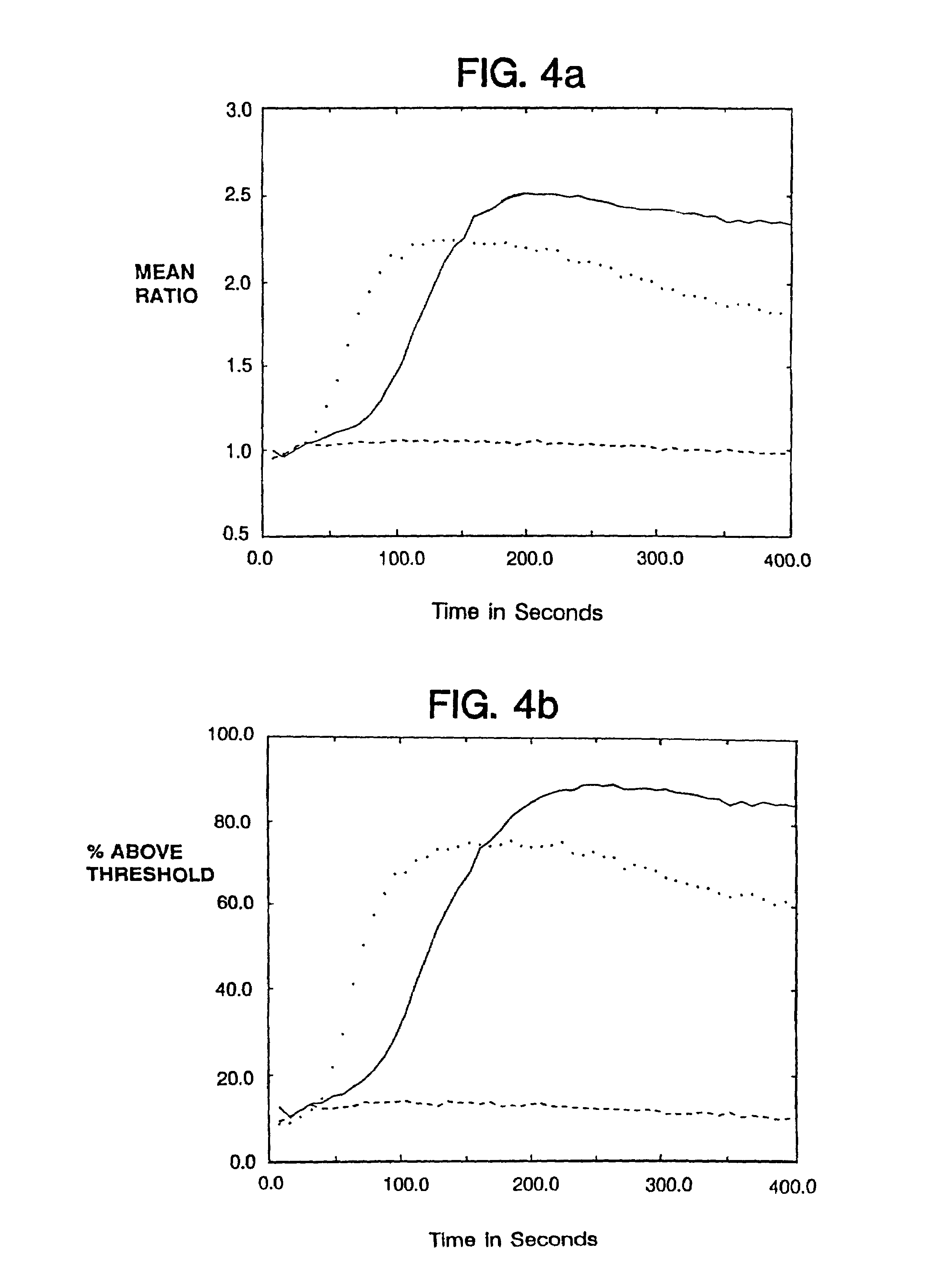Targeted cytolysis of HIV-infected cells by chimeric CD4 receptor-bearing cells
a cytolysis and chimeric cd4 technology, applied in the field of targeted cytolysis of hiv-infected cells by chimeric cd4 receptor-bearing cells, can solve the problems of osmotic disequilibrium, lethal immunosuppression, and plasma membrane disruption
- Summary
- Abstract
- Description
- Claims
- Application Information
AI Technical Summary
Benefits of technology
Problems solved by technology
Method used
Image
Examples
example i
Construction of Human IgG1:Receptor Chimeras
[0096]Human IgG1 heavy chain sequences were prepared by joining sequences in the CH3 domain to a cDNA fragment derived from the 3′ end of the transmembrane form of the antibody mRNA. The 3′ end fragment was obtained by polymerase chain reaction using a tonsil cDNA library as substrate, and oligonucleotides having the sequences:
[0097]CGC GGG GTG ACC GTG CCC TCC AGC AGC TTG GGC (SEQ ID NO: 7) and
[0098]CGC GGG GAT CCG TCG TCC AGA GCC CGT CCA GCT CCC CGT CCT GGG CCT CA (SEQ ID NO: 8), corresponding to the 5′ and 3′ ends of the desired DNA fragments respectively. The 5′ oligo is complementary to a site in the CH1 domain of human IgG1, and the 3′ oligo is complementary to a site just 5′ of the sequences encoding the membrane spanning domain. The PCR product was digested with BstXI and BamHI and ligated between BstXI and BamHI sites of a semisynthetic IgG1 antibody gene bearing variable and constant regions. Following the insertion of the BstXI t...
example ii
Construction of CD4 Receptor Chimeras
[0104]Human ζ (Weissman et al., Proc. Natl. Acad. Sci. USA 85:9709–9713 (1988b)) and γ (Küster et al., J. Biol. Chem. 265:6448–6452 (1990)) cDNAs were isolated by polymerase chain reaction from libraries prepared from the HPB-ALL tumor cell line (Aruffo et al., Proc. Natl. Acad. Sci. USA 84:8573–8577 (1987b)) and from human natural killer cells, while η cDNA (Jin et al., Proc. Natl. Acad. Sci. USA 87:3319–3323 (1990)) was isolated from a murine thymocyte library. ζ, η and γ cDNAs were joined to the extracellular domain of an engineered form of CD4 possessing a BamHI site just upstream of the membrane spanning domain (Aruffo et al., Proc. Natl. Acad. Sci. USA 84:8573–8577 (1987b); Zettlmeissl et al., DNA Cell Biol. 9347–353 (1990)) which was joined to the BamHI site naturally present in the ζ and η cDNAs at a similar location a few residues upstream of the membrane spanning domain (SEQ ID NOS: 1, 3, 4 and 6). To form the fusion protein with γ a Ba...
example iii
CD4 Chimeras can Associate with Other Receptor Chains
[0105]Cell surface expression of the macrophage / natural killer cell form of human FcγRIII (CD16TM) on transfectants is facilitated by cotransfection with murine (Kurosaki et al., Nature 342:805–807 (1989)) or human (Hibbs et al., Science 246:1608–1611 (1989)) γ, as well as by human ζ (Lanier et al., Nature 342:803–805 (1989)).
[0106]Consistent with these reports, expression of the chimeras also allowed surface expression of CD16TM when delivered to the target cell either by cotransfection or by coinfection with recombinant vaccinia viruses (FIG. 2). The promotion of CD16TM surface expression by ζ was more pronounced than promotion by γ (FIG. 2) in the cell lines examined, whereas native CD4 did not enhance CD16TM surface expression.
PUM
 Login to View More
Login to View More Abstract
Description
Claims
Application Information
 Login to View More
Login to View More - R&D
- Intellectual Property
- Life Sciences
- Materials
- Tech Scout
- Unparalleled Data Quality
- Higher Quality Content
- 60% Fewer Hallucinations
Browse by: Latest US Patents, China's latest patents, Technical Efficacy Thesaurus, Application Domain, Technology Topic, Popular Technical Reports.
© 2025 PatSnap. All rights reserved.Legal|Privacy policy|Modern Slavery Act Transparency Statement|Sitemap|About US| Contact US: help@patsnap.com



